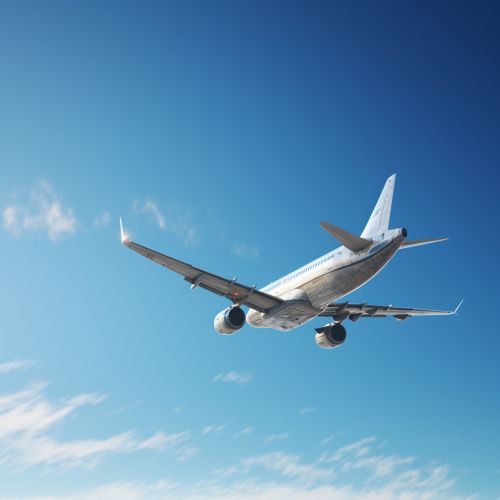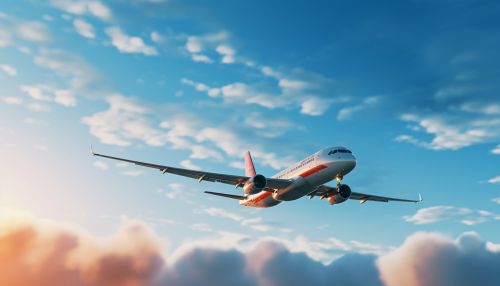Aircraft Performance
Introduction
Aircraft performance involves the study of an aircraft's ability to accomplish its designated tasks and the computational methods to optimize its capability. It encompasses a wide range of factors, including speed, altitude, and distance capabilities, as well as the ability to carry loads, among others.


Factors Affecting Aircraft Performance
Aircraft performance is influenced by a multitude of factors. These can be broadly divided into two categories: aircraft-specific factors and environmental factors.
Aircraft-Specific Factors
Aircraft-specific factors include the design and construction of the aircraft, its weight, and the power of its engine(s). The design of the aircraft, including its aerodynamics and structural integrity, plays a significant role in its performance. The weight of the aircraft, including its payload, fuel, and equipment, also affects its performance. The power of the aircraft's engine(s) is another critical factor, as it determines the aircraft's speed and altitude capabilities.
Environmental Factors
Environmental factors that affect aircraft performance include atmospheric conditions, such as air density, temperature, and wind speed. The performance of an aircraft can be significantly affected by these factors. For example, an aircraft's speed and altitude capabilities can be reduced in high temperature or low air density conditions.
Aircraft Performance Parameters
There are several key parameters that are used to measure aircraft performance. These include speed, range, rate of climb, service ceiling, and payload capacity.
Speed
Speed is a fundamental parameter in aircraft performance. It is typically measured in knots (nautical miles per hour) or Mach number (the ratio of the speed of the aircraft to the speed of sound). The maximum speed that an aircraft can achieve is determined by its engine power and aerodynamic design.
Range
The range of an aircraft is the maximum distance it can fly without refueling. It is determined by the fuel efficiency of the aircraft's engine(s), the amount of fuel it can carry, and its payload.
Rate of Climb
The rate of climb is the speed at which an aircraft can increase its altitude. It is typically measured in feet per minute. The rate of climb is determined by the aircraft's engine power, weight, and aerodynamic design.
Service Ceiling
The service ceiling is the maximum altitude at which an aircraft can maintain a specified rate of climb. It is determined by the aircraft's engine power, weight, and aerodynamic design.
Payload Capacity
The payload capacity is the maximum weight of passengers and cargo that an aircraft can carry. It is determined by the aircraft's design, including its structural strength and size.
Aircraft Performance Calculations
The performance of an aircraft can be calculated using a variety of methods. These calculations are typically based on the aircraft's specifications and the environmental conditions in which it is operating.
Speed Calculations
The speed of an aircraft can be calculated using the formula:
Speed = Distance / Time
This formula can be used to calculate the aircraft's ground speed (the speed at which it is moving relative to the ground) or its airspeed (the speed at which it is moving relative to the air).
Range Calculations
The range of an aircraft can be calculated using the formula:
Range = Fuel Capacity / Fuel Consumption Rate
This formula can be used to calculate the aircraft's maximum range (the maximum distance it can fly without refueling).
Rate of Climb Calculations
The rate of climb of an aircraft can be calculated using the formula:
Rate of Climb = (Engine Power - Drag) / Weight
This formula can be used to calculate the aircraft's rate of climb under various conditions.
Service Ceiling Calculations
The service ceiling of an aircraft can be calculated using the formula:
Service Ceiling = (Engine Power - Drag) / Weight
This formula can be used to calculate the aircraft's service ceiling under various conditions.
Payload Capacity Calculifications
The payload capacity of an aircraft can be calculated using the formula:
Payload Capacity = Maximum Takeoff Weight - Empty Weight - Fuel Weight
This formula can be used to calculate the aircraft's payload capacity under various conditions.
Conclusion
Aircraft performance is a complex field that involves the study of an aircraft's capabilities and the computational methods used to optimize these capabilities. It is influenced by a multitude of factors, including the design and construction of the aircraft, its weight, the power of its engine(s), and environmental conditions. The performance of an aircraft is typically measured using key parameters such as speed, range, rate of climb, service ceiling, and payload capacity.
